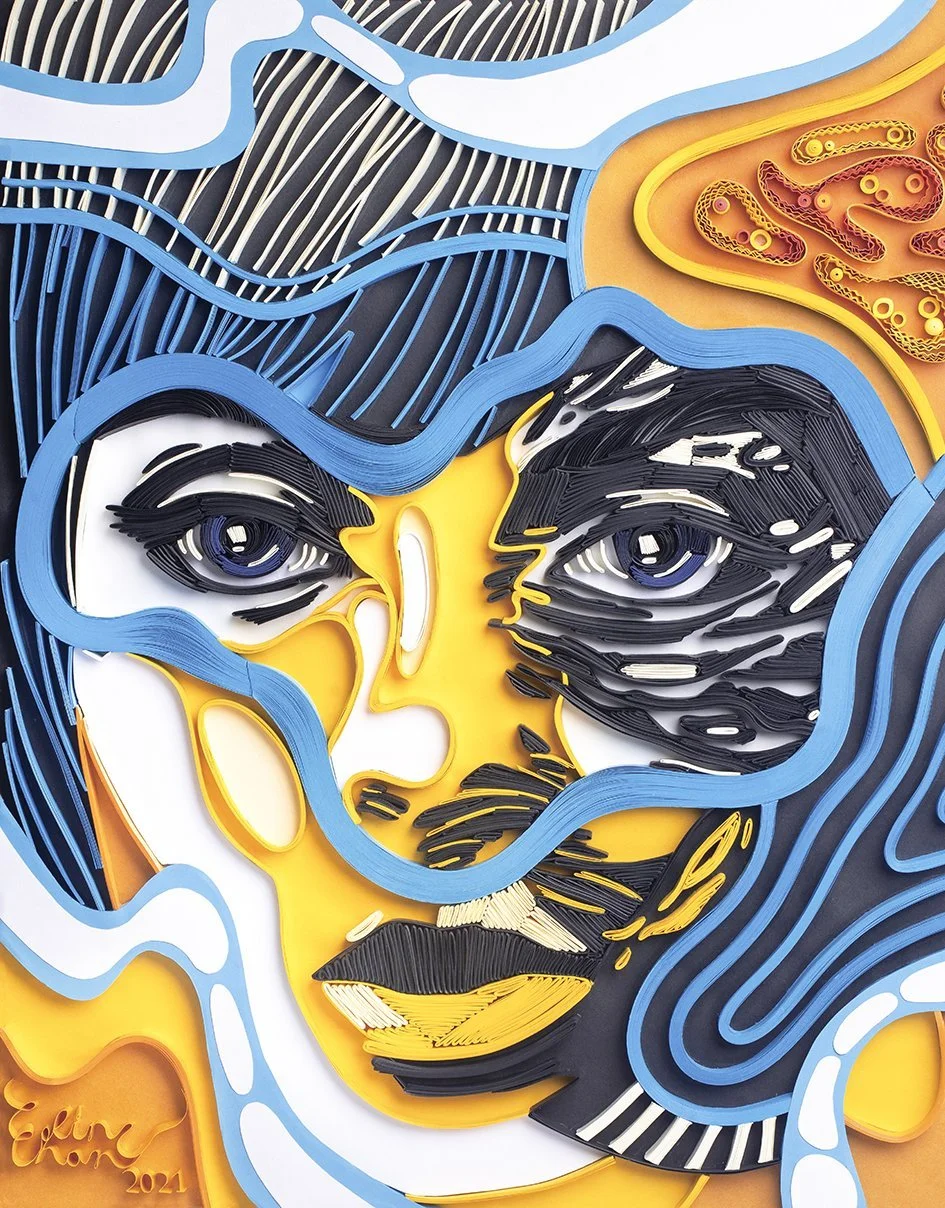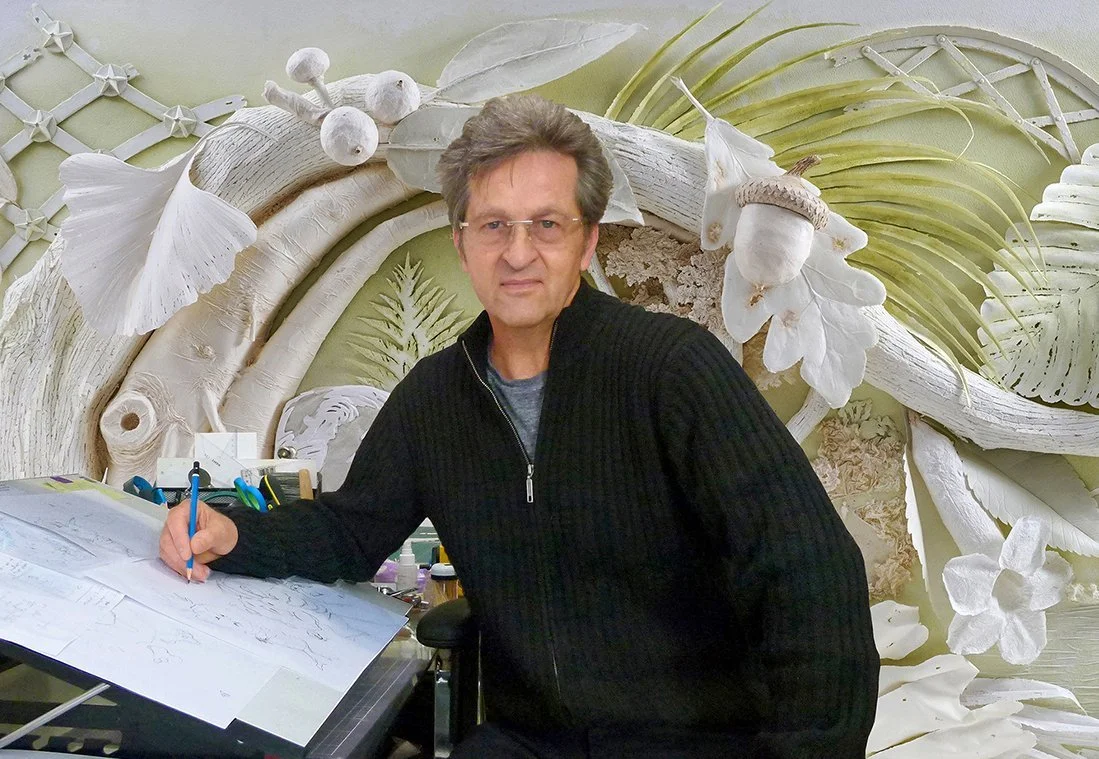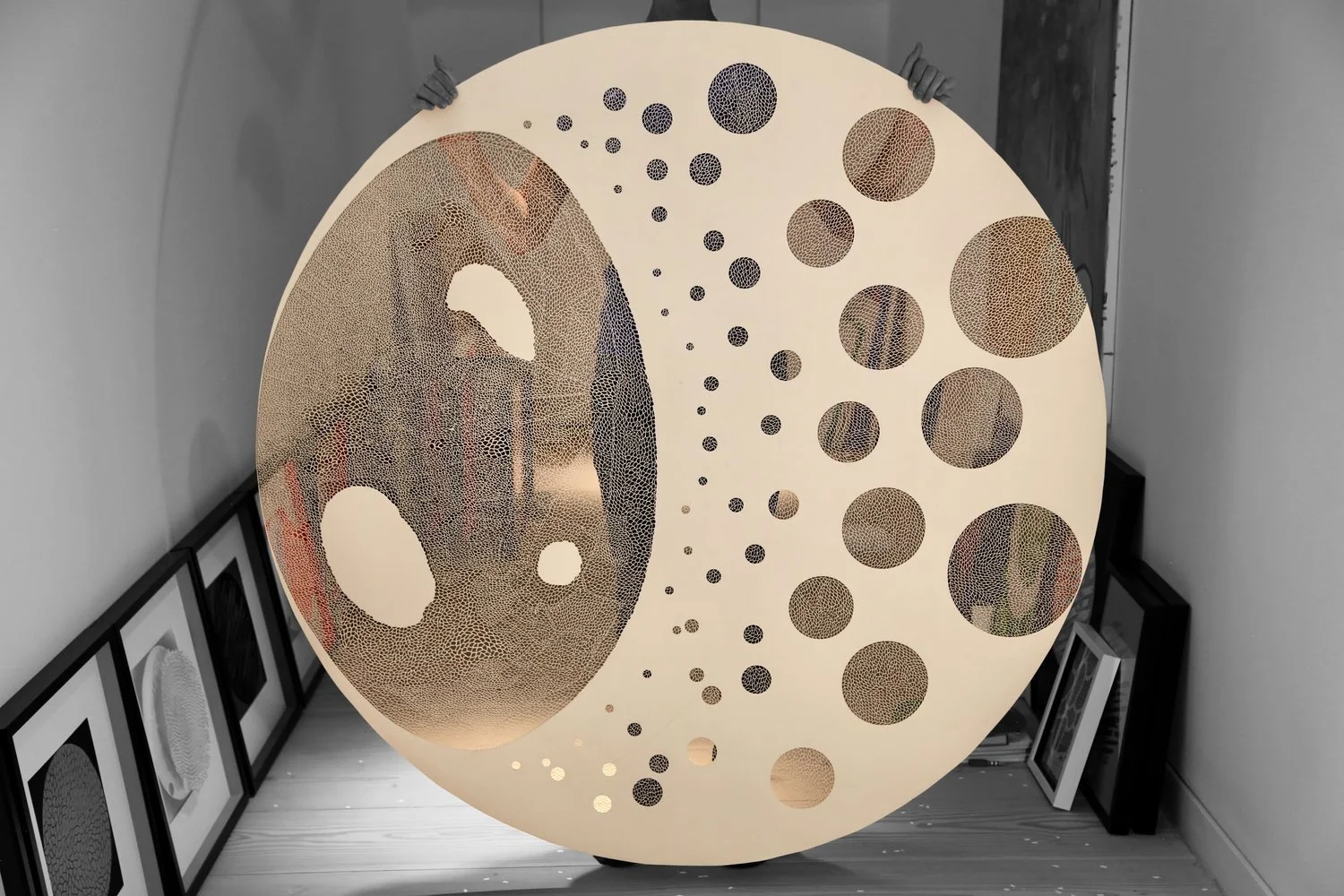10 Questions with Jameel Haiat
Jameel Haiat grew up in Los Angeles as the son of two cultures. Born to a Pakistani father and a Mexican/American mother, he is a product of their angst, violence, love and attention. His life as an artist, writer, maker and designer has taken him to places far and wonderful where he has absorbed vibrant cultures, touching personal stories and various perspectives that influence and shape his work today. Additionally, as a cancer survivor, he has been profoundly affected by this traumatic disease as well as his ongoing journey of recovery, reflecting in a deeply personal approach to his life and work. He currently lives in Chiang Mai, Thailand, with his loving wife and partner in everything, Hilcia and their sweet four-legged girl, Tomi Yum, where he now focuses on his latest art, which is a variety of mixed medium pieces, as well as writing poetry, creative short stories and other fiction.
Jameel Haiat - Portrait
ARTIST STATEMENT
As Jameel Haiat addresses personal issues of pain, trauma and violence, he questions whether these emotional issues assist the artist in controlling his creation or whether these emotional issues allow the creation to control the artist.
His creation of each piece, through the act of tearing paper and cardboard, is both deconstructive and violent, while reassembling the torn elements is reconstructive and peaceful, which addresses these emotional issues not only in the final completed work but in the actual creation of the work as well. This process allows him to explore the impact of these issues and the associated emotions in not only himself but also as they pertain to others, whether through abuse, migration or war.
Additionally, as he produces the work, he is not just a participant but becomes an observer, present, looking in from the outside as a stream of consciousness guided by his emotional memory, which helps drive his work at a semi-conscious level.
Leave It in the Rice Field, Mixed Media, 70x50x15 cm, 2024 © Jameel Haiat
INTERVIEW
First of all, what inspired you to become an artist, and when did you first realize this was your path?
I truly believe that being creative is how artists are born. It's part of our DNA. Whether we choose to listen to the voice within us as artists that drives our creativity depends upon many other factors. With that said, I've always known that being creative was who I was from a very young age, maybe ten years old or younger. I always painted, sculpted or explored creativity in a number of ways ever since I can remember. I was always different from the other kids. When they chose to play sports, I chose to stay inside and make things. In fact, the very first job I got, at sixteen years old, was working as an assistant to a commercial artist drawing and inking advertisements for surfing magazines.
Your background is a blend of Mexican and American cultures. How do these influences appear in your work?
Surprisingly, my ethnic background has very little influence on my work. Growing up in Los Angeles, in such a multi-cultural city and neighbourhood, I always just felt like another kid, and both my parents were more a part of California and "Angelino" culture than they were in tune with a strong ethnic identity. But, what does influence my work greatly and has been a vital part of my vocabulary is how my parents raised and treated me. Their temperament and angst resulted in an incredibly dysfunctional and abusive household, which now manifests itself in my current series entitled "Black".
Madre Mijo, Mixed Media, 95x110x25 cm, 2025 © Jameel Haiat
You Lack Hue, Mixed Media, 69x50x12 cm, 2024 © Jameel Haiat
You work with mixed media and a unique tearing-and-reassembling process. Can you describe what draws you to this technique?
Originally, it started as I was trying to break down the edges of my watercolour paper for my paintings. I have always thought it strange that artists accept the rectangular parameters presented on paper and canvas, so I started to tear the edges of the paper prior to painting. As I did so, I had an "a-ha" moment and envisioned doing much more with this medium that now presented itself. Once I realized that I could sculpt with paper and create textures and shapes that were easily manipulated, lightweight and forgiving, my entire creative vocabulary opened up. I absolutely fell in love with the textural feeling of how the paper or cardboard tears within my hands.
Your art deals with themes of pain, trauma, and violence. How does creating help you process these emotions?
It allows me to purge and release the emotional baggage associated with these issues. As I mentioned previously, I grew up in an abusive and dysfunctional household, so the pain that resided within me through my youth and onwards needed an outlet. If I didn't have art as my outlet, I would have self-destructed. It was the dark path I was on. I didn't know then how trauma could have such a grip on us and affect us so profoundly. Once I came to terms with that part of my life, I realized that I could express my feelings with the work I created. I released all of my trauma and terrible past experiences into my art. Being creative has completely saved my life, literally.
You've travelled to many places and absorbed different cultures. Is there a particular place that has had a lasting impact on your art?
There are a few different places that left a deep impression on me, but I would say Cambodia, Myanmar, and Laos were the most profound. The reason these particular countries live in my heart and mind and have impacted my life and work is that they, as a people and a country, have survived a variety of traumatic experiences with grace, love, and dignity. In each one of these countries, people greet you with a smile, with warmth and incredible kindness. They have so very little material wealth but are wonderfully rich in their giving. That aspect of moving forward through trauma and suffering triggered my own experiences and allowed me to connect on a deep level and has stayed with me. Living here in Southeast Asia, I reflect on those beautiful people and their enduring spirit daily as I create my work.
Rupture, Mixed Media, 160x90x15 cm, 2024 © Jameel Haiat
I Cant See, Mixed Media, 53x46x12 cm, 2024 © Jameel Haiat
How has your experience as a cancer survivor influenced your creative approach and artistic themes?
Surviving cancer and facing my own mortality has taught me many lessons, the most important being that time is our greatest asset. It has shown me that life is precious and that every second counts. We can always make more money, but we can never have more time. So, with that in mind, I wake up daily, around 4:30 am, and start my day with life and creativity. I strive to be creative every day in one form or another. Living through and with this disease, I cannot help but be deeply influenced, and it comes through, especially in my "Black" series. You can see the manifestation of this in the broken edges, torn pieces, nails and colour choices of the pieces within this body of work. I allow the emotions of what I experienced and continue to experience to present themselves openly for others to see.
You also write poetry and fiction. How does your writing connect with your visual art?
There are some pieces that I envision and create as a physical representation of my poetry and some poetry as the written version of a piece of art. I feel that the two are intertwined. There are also some pieces that I am currently working on that incorporate some of my written words directly into the piece as a more direct way to connect to the viewer. I also view any of my creative outlets as just another way to release and express myself. There are some days where my energy goes into writing and some days where it goes into making art. For me, they are one and the same.
You mention that during the creative process, you become both a participant and an observer. Can you explain how this dual perspective shapes your work?
When I'm tearing the paper for my work, I sometimes find myself in a sort of "state" where I feel I'm unconsciously creating. I feel that my emotional self takes over. It's at that moment when I feel Ike. I'm outside looking in, and I'm not actually mentally controlling my creation. Yes, my hands are working, tearing, but it's as though I'm looking at someone else's hands. I don't fight this feeling, I welcome it. I try to give in to this state of mind completely and totally. I think embracing this inside/outside state allows a very organic and universal feel to my work. There's something about this that's almost primal that we can all relate to, something we can't quite discern or put a name to that draws myself and the viewer to the work.
Earth Mud and Cardboard, Mixed Media, 73x120x15 cm, 2024 © Jameel Haiat
Now that you're based in Chiang Mai, how has this environment affected your art and creativity?
Chiang Mai is an incredible artistic and cultural hub. There's so much creativity in so many forms here that it's hard not to be deeply impacted. There are solo shows, community shows, gallery openings, poetry readings, and more every week. Add to these amazing creative outlets the absolutely wonderful natural environment and landscape of forests, rice fields, waterfalls and mountains, and it's hard not to be inspired to create. I've truly never felt at home wherever I lived. Even growing up in Los Angeles, I felt like an outsider. But here in Chiang Mai, I feel like I'm finally home, and now that I found home, my world opened up, especially my creativity.
Lastly, what are you currently working on, and what do you hope to explore next in your artistic journey?
I'm currently working on my various series, "Black" and "Chiang Mai, Change Me". Adding to the "Black" series, I've also started work that is keenly focused on my cancer recovery and much more sculptural, utilizing cardboard, paper, and discarded tools, medication bottles and tube-fed food packages that saved and continue to save my life. I also continue to be inspired by and write poetry and other works, and I look forward to releasing my third poetry book, a creative short storybook and a fictional novel, very soon.
Artist’s Talk
Al-Tiba9 Interviews is a promotional platform for artists to articulate their vision and engage them with our diverse readership through a published art dialogue. The artists are interviewed by Mohamed Benhadj, the founder & curator of Al-Tiba9, to highlight their artistic careers and introduce them to the international contemporary art scene across our vast network of museums, galleries, art professionals, art dealers, collectors, and art lovers across the globe.

















